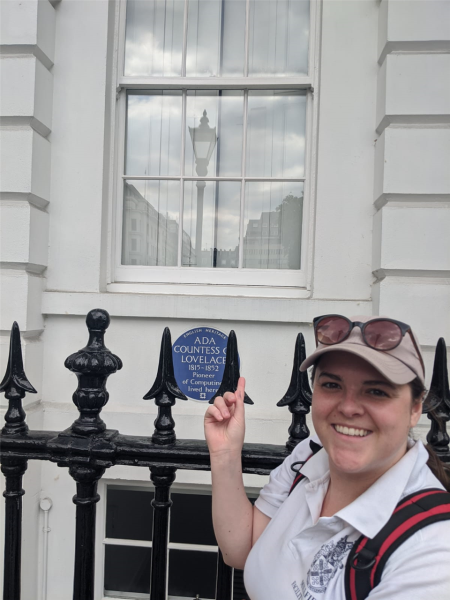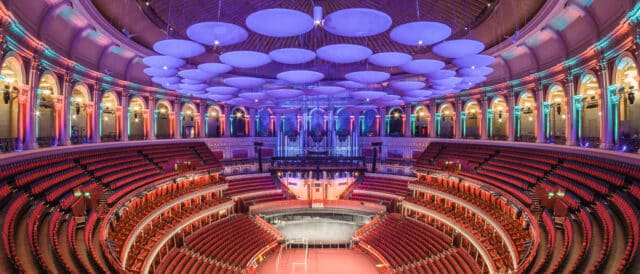Related articles
During this half term break, Kensington Park School are launching a new blue plaque competition!
When you are out on your daily walks, you may have noticed some blue plaques around London devoted to famous literary, scientific and artistic figures. This holiday, we would like to challenge all our students- and staff- to go out and take a picture of themselves next to their local blue plaque. They must then write a short blurb about this famous figure, with the chance to win house points!
There will also be an overall house winner. Think about how these points could push your house closer to the house cup…
Don’t worry if you’re not in London this half term break, as you can still take part in this competition!
There are several famous figures in the world who have not yet been given a London blue plaque – you can create a blue plaque and blurb for one of these people and send it in to one of your teachers! Make sure you do your research to ensure they do not already have a plaque, and argue passionately about why they should be remembered with one. Include where you think this plaque should be (it doesn’t have to be in London), and make sure to include their birth, death, and key achievements.
What are blue plaques?
London’s famous blue plaques link the people of the past with the buildings of the present. Now run by English Heritage, the London blue plaques scheme was started in 1866 and is thought to be the oldest of its kind in the world.
Across the capital over 900 plaques, on buildings humble and grand, honour the notable men and women who have lived or worked in them. Discover some of the people commemorated with blue plaques by using the following English Heritage website.
Who to submit your entries to
All entries should be sent to the teacher of the subject which is relevant to your blue plaque:
Miss Jones – Languages (Spanish, Mandarin, Latin, Classics, French, German, Italian, etc.)
Miss Wallace – English
Miss Piggott – Arts (Drama, Art, Music)
Mrs Emerton – Science (Biology, Chemistry, Physics)
Dr King – Maths and I.T.
Miss Martin – Humanities (History, Geography, R.S., Philosophy)
Miss Farmer – PE, Sports and Outdoor Pursuits
If you are unsure who to send your entry to, please send your entry to Miss Wallace.
Prizes?
All entries will receive house points, but the top entry in each subject will receive 5 house points, contributing to an overall house winner for this Half Term House Competition, inspired by our frequent walks in our new normal!
Winners will be announced after the exam week.
Final Deadline: 5th June
If you have any questions, please email Miss Jones or Miss Wallace. Happy walking!
Miss Street’s example…
Charles Dickens was an English writer and social critic, who lived from 1812-1870. He is known for creating some of the world’s most loved fictional characters, often named in a ridiculous and farcical manner for the entertainment of his readers. Dickens is one of my all time favourite writers, not only because he was a fantastic writer who challenged the idea of social inequality at a time when it was controversial to do so, but also because he wrote in a way that was humorous and comedic, and often accompanied his stories with hand crafted illustrations. A Tale of Two Cities is one of my favourites, which includes a hysterical reference to a character having hair so spikey, that ‘the best of players at leap-frog might have declined him, as the most dangerous man in the world to go over.’ Finding the plaque for Dickens and visiting the museum (which is actually where he used to live) was a brilliant experience; it brought him and his writing to life, and temporarily transported me back to life in Victorian London.
Miss Jones’ example…
This weekend I went walking around my local area, looking out for new and exciting sites. Much to my surprise, I found William Blake’s blue plaque, and alongside this was a bridge filled with beautiful mosaics of his poetry and engravings. William Blake lived during the late 18th and early 19th century, dying in 1827. He was a key figure in the Romantic period, and wrote some of the most famous poems in England. For example, the GCSE poem ‘The Tyger’ was written by Blake, and it was Blake who spoke of ‘dark satanic mills’ and ‘England’s green and pleasant land’. As one of my favourite writers, this was such a wonderful surprise, and something I would never have stumbled across if I hadn’t been forced to walk more in my own home city! To clarify, Blake didn’t live in the modern housing estate that now stands on this spot…






